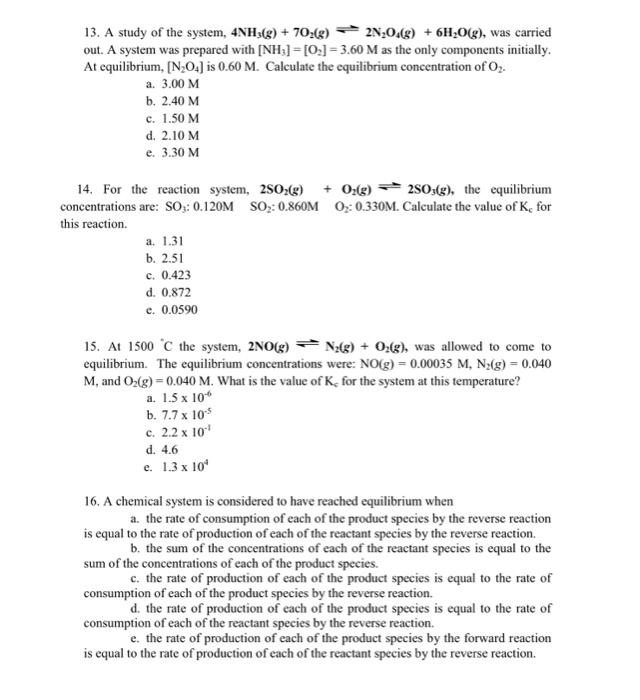Answered step by step
Verified Expert Solution
Question
1 Approved Answer
13. A study of the system, 4NH3(g)+7O2(g)2N2O4(g)+6H2O(g), was carried out. A system was prepared with [NH3]=[O2]=3.60M as the only components initially. At equilibrium, [N2O4] is

Step by Step Solution
There are 3 Steps involved in it
Step: 1

Get Instant Access to Expert-Tailored Solutions
See step-by-step solutions with expert insights and AI powered tools for academic success
Step: 2

Step: 3

Ace Your Homework with AI
Get the answers you need in no time with our AI-driven, step-by-step assistance
Get Started


